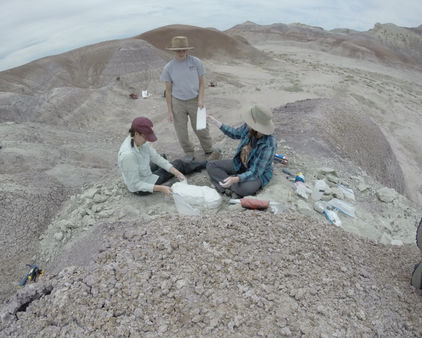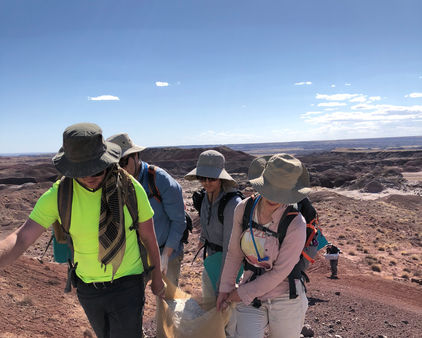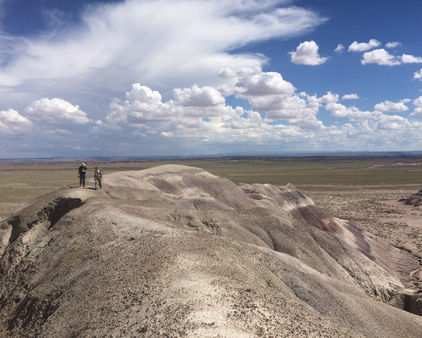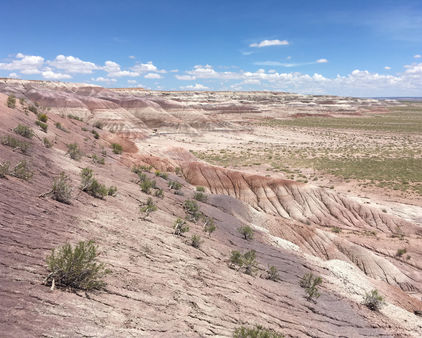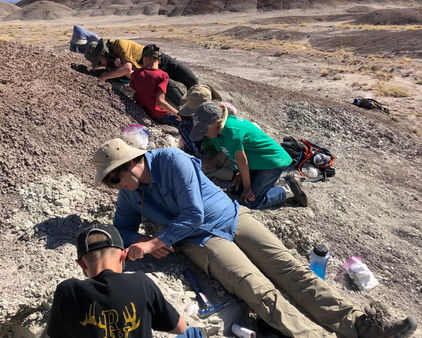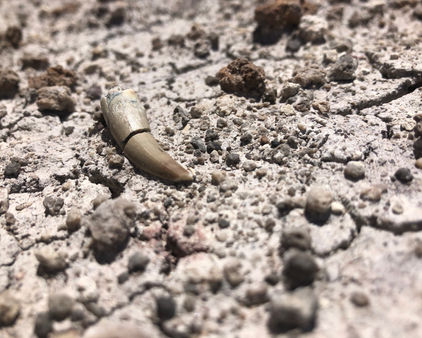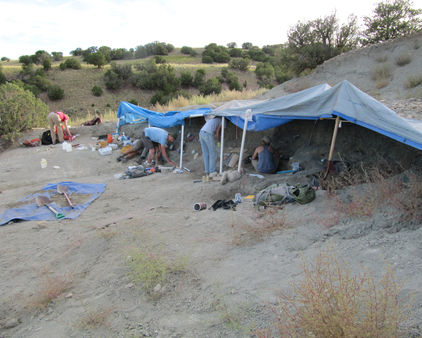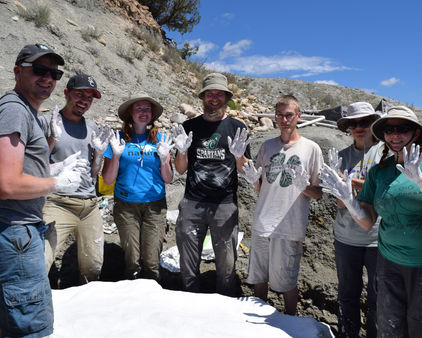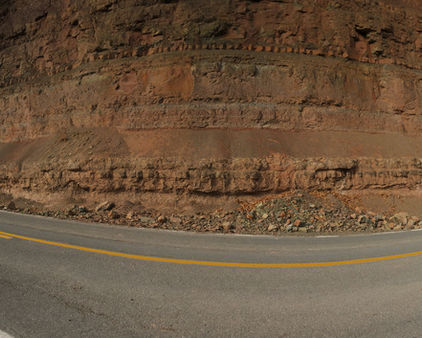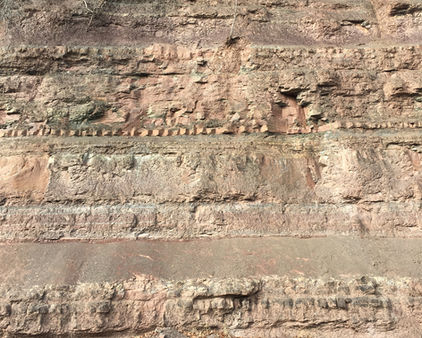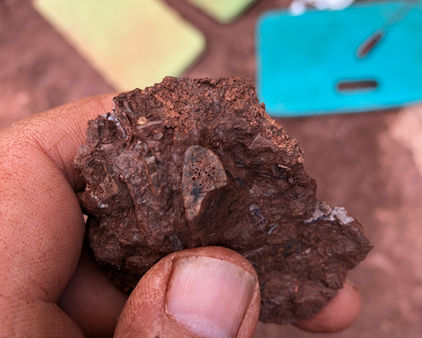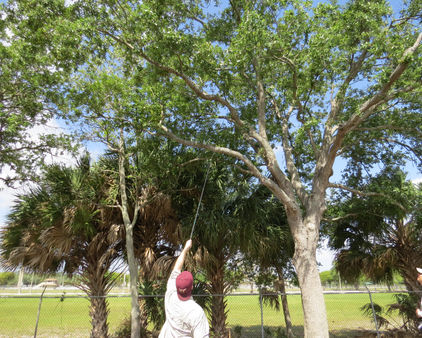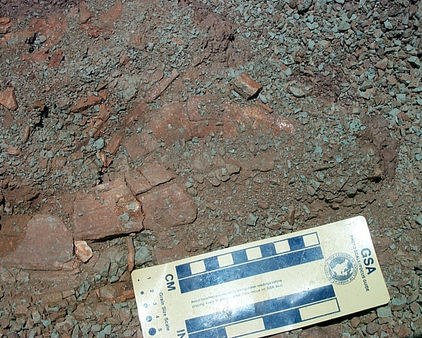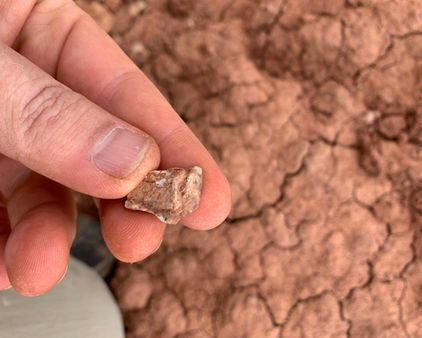Petrified Forest National Park and Vacinity
Age: ~220 to ~207 mya, Late Triassic
Why? Petrified Forest National Park (PEFO), known mostly from it fossilized forests, preserves dozens of extinct vertebrates from that same time. PEFO preserves on of the best, relatively unbroken terrestrial sequences in the world so we can chronicle changes on the million of years timescale. We also get to directly share our scientific results (e.g., new species, patterns of evolution) with the hundreds of thousands of visitors to the National Park
Importance: Sediments from the Late Triassic records the rise of reptiles and other associated fauna transitioning from the Permian to the Jurassic Periods. This area contain one of the only records of equatorial Pangea over millions of years and is producing dozens of new species.
Collaborators: Michelle Stocker, William Parker, Adam Marsh, Tony Fiorillo
Ghost Ranch, New Mexico
Age: ~212 to ~205 mya, Late Triassic
Why? The area around Ghost Ranch preserves a number of highly diverse bone beds that span ~7-10 mya of Late Triassic vertebrate evolution. Also, the Ruth Hall Museum at Ghost Ranch allows us to present our findings to thousands of visitors.
Importance: Ghost Ranch has produce more information about the anatomy of early dinosaurs, their closest relatives, and their vertebrate contemporaries than any other area in the northern hemisphere. Additionally, we have collected data that places these important finds in a paleoenvironmental context that has told us that the low latitudes in the Triassic were a difficult place to live.
Collaborators: Randall Irmis, Nathan Smith, Alan Turner, Michelle Stocker, Jennifer Olori, Alex Downs
West Virginia
Age: ~335 to~325 Upper Mississippian
Why? Few terrestrial Upper Mississippian vertebrates are known from the eastern United States. Harvard collected from the area in the 1950s, but did not return. Now, our team relocated and discovered a series of new vertebrate localities that preserve fossils in paleosols and in lacustrian limestones.
Importance: Upper Mississippian terrestrial vertebrates are rare and help understand the rise of terrestrial vertebrates and freshwater vertebrates. The new specimens we are finding are a mix of taxa known from other similar localities in Europe and new species.
Collaborators: Stephanie Pierce, Michelle Stocker
Southern Florida
Age: ~1880 to recent
Why? Southern Florida has well over 50 species of exotic vertebrates that are established across the peninsula. Most of these are exotic vertebrates are lizards that have come from all over the world and each species has a distinct bodysize, ecology, and other important characteristics. We can collect data on these vertebrates easily.
Importance: Exotic vertebrates can help us understand how invasive populations change when entering new environments and how morphology and genetics change in concert with biogeography. Also, we can collect a variety of different age classes to understand how different lizards grow.
Collaborators: Michelle Stocker
Moenkopi basin
Age: ~242 to ~235, Middle Triassic
Why? I started my career searching the Moenkopi basin across Arizona and New Mexico for vertebrates. Although rare, the fossils from the basin are the only place that equatorial Middle Triassic vertebrates can be found. Extensive outcrops of the formation are found over a broad area.
Importance: The largely fragmentary fossils from the basin records the aftermath of the end-Permian extinction and the rise of reptiles. Archosaur fossils, some of the oldest on the planet, are found across the basin and demonstrate that early forms were rather diverse. Additionally, lots of small and strange reptiles are present (e.g., tanystropheids)
Collaborators: William Parker, Michelle Stocker
Triassic basin of the eastern United States
Age: ~230 mya, Late Triassic
Why? The eastern portion of the United States bears a series of deep basins that preserve fossil from when Pangea was being ripped apart. These basins contain fossils from the Late Triassic from time and a place we know little about. Brick and rock quarries from North Carolina to Nova Scotia turn up fossils all of the time
Importance: These basin are important temporal and biological information keepers. Spectacular fossil vertebrate skeletons have been found. More soon!
Collaborators: Lindsay Zanno, Paul Olsen, Christian Kammerer

Late Triassic on the edge - the Dockum Group
Age: ~220-210 mya, Late Triassic
Why? The Dockum Group of Texas has been extremely important source of Triassic animals and it is poised to produce even more with some exciting new finds. We are now starting to figure out the stratigraphy of important localities also.
Importance: Partial skeletons are more common than in other places in the Chinle Formation and vertebrates are very abundant in some places. Microvertebrates are also more common than previously thought and we are resampling previous discovered localities.
Collaborators: Michelle Stocker, Doug Cunningham, Sankar Chatterjedd, Kendra Dean, John-Henry Voss

